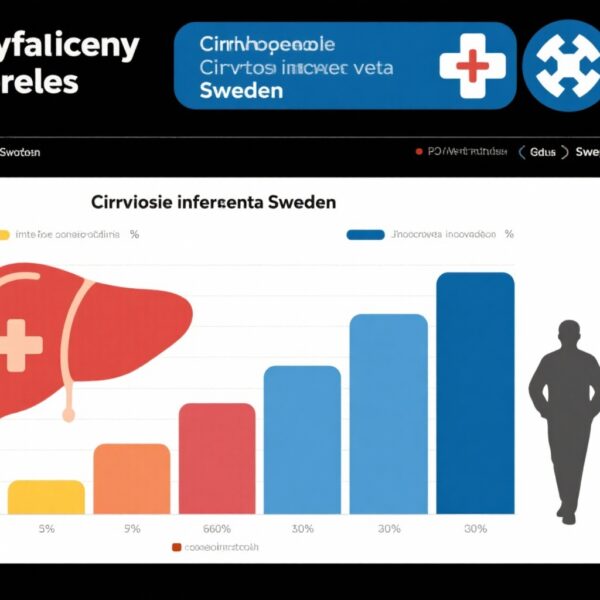Highlights
– Autopsy study of five aducanumab-treated Alzheimer’s cases shows disproportionate clearance of Aβ from superficial cortical layer I with limited clearance in deeper layers, despite PET Centiloid reductions of up to 81%.
– Regions corresponding to ARIA on MRI contained microinfarcts with haemosiderin, complement activation, and CD68-positive vessel-wall changes arising from Aβ-laden leptomeningeal and penetrating vessels.
– All treated participants carried an APOE ε4 allele; two harboured a PSEN1 mutation. All cognitive trajectories declined during treatment, and ARIA occurred in two participants.
Background
Therapies targeting aggregated amyloid β (Aβ) with monoclonal antibodies have focused attention on in-vivo decluttering of cortical amyloid and the clinical consequences of such clearance. Aducanumab, an anti-Aβ monoclonal antibody, received regulatory attention and catalysed discussion about efficacy, safety, and biomarker interpretation. A particular safety phenomenon, amyloid-related imaging abnormalities (ARIA), encompasses MRI-detected edema/effusion (ARIA-E) and microhemorrhage/haemosiderin deposition (ARIA-H); ARIA frequency and severity are higher among APOE ε4 carriers and with higher antibody exposure. Understanding how in-vivo PET changes correspond to post-mortem neuropathology—and how ARIA maps to tissue injury—is crucial to guiding clinical use and next-generation therapeutic development.
Study design
This retrospective case–control neuropathological study (Mayo Clinic brain bank) compared five aducanumab-treated participants from clinical trials (2016–21) who underwent autopsy between 2020 and 2023, against 12 matched untreated participants drawn from the Mayo Clinic Alzheimer’s Disease Research Center and Mayo Clinic Study of Aging cohorts. Treated participants were matched by autosomal dominant Alzheimer’s disease mutation or APOE genotype, age at cognitive symptom onset, and sex.
Clinical data included cognitive trajectories, MRI evidence of ARIA, and [18F]florbetapir PET Centiloid values pre- and post-treatment. Cumulative aducanumab dosages varied broadly (5–241 mg/kg). Neuropathological evaluation assessed layer-specific Aβ deposition (including Aβaa1-8 and Aβ42), vascular amyloid, evidence of microinfarcts/haemorrhage, markers of complement activation, and microglial/macrophage activation (CD68). Descriptive analyses and Mann–Whitney U tests were used for comparisons.
Key findings
Demographics and treatment course
All five aducanumab-treated participants were carriers of at least one APOE ε4 allele; two had PSEN1 mutations. Cumulative aducanumab exposure spanned a wide range (5–241 mg/kg). Despite treatment, all five participants showed cognitive decline during the treatment period. Two developed clinically and radiologically evident ARIA.
PET biomarker changes
[18F]florbetapir PET Centiloid reductions ranged from −6% to −81% compared with baseline. These reductions indicate variable in-vivo amyloid signal loss following treatment; larger PET decreases did not translate into clinical stabilization in these individuals.
Layer-specific neuropathology: superficial clearance
Post-mortem histopathology revealed a striking pattern: treated cases demonstrated clearance of Aβaa1-8 and Aβ42 predominantly localized to cortical layer I (the most superficial cortical lamina), whereas deeper cortical layers showed no or minimal clearance. This spatially selective target engagement contrasts with a more uniform plaque distribution typically observed in untreated cases and suggests a superficial predilection for antibody-mediated amyloid removal.
ARIA-associated focal vascular pathology
Histologic correlation with MRI-identified ARIA regions showed microinfarcts with haemosiderin deposition, complement activation, and vessel walls positive for CD68—findings consistent with focal vascular injury and macrophage/microglial activation. These changes appeared to originate from Aβ-laden leptomeningeal and penetrating vessels, implicating vascular amyloid as a nidus for inflammatory and haemorrhagic sequelae following antibody exposure.
Temporal context
Interval from treatment to death varied between 5 and 41 months, giving a range of temporal windows to observe both acute and subacute neuropathological consequences. The presence of complement activation and macrophage marker positivity in ARIA-correlated regions suggests an active immune-mediated process in situ related to amyloid removal.
Clinical outcomes
All treated participants experienced cognitive decline during the treatment period. No neuropathological evidence in these five cases suggested that superficial amyloid clearance translated into preserved cognitive function; however, the small sample and variable timing of treatment-to-autopsy limit conclusions on efficacy.
Expert commentary and mechanistic interpretation
Biological plausibility
The superficial layer I is anatomically adjacent to the pial surface and subarachnoid spaces that contain leptomeningeal vessels and perivascular drainage pathways. Antibody-mediated engagement of vascular and perivascular Aβ could preferentially mobilize aggregates at these superficial interfaces. If clearance proceeds along perivascular routes, the concentrated removal of leptomeningeal and superficial parenchymal amyloid may produce local stress on vessel walls already compromised by cerebral amyloid angiopathy (CAA), particularly in APOE ε4 carriers. Complement activation and CD68-positive vessel-wall changes observed here are compatible with an opsonization–phagocytosis sequence and with immune-mediated vessel damage facilitating microhemorrhages and microinfarcts (ARIA-H and ARIA-E sequelae).
Implications for interpretation of PET
Large reductions in cortical PET signal may reflect selective superficial amyloid removal rather than uniform parenchymal plaque clearance. Thus, PET decreases alone may overestimate the reversal of deeper neuropathological burden relevant to neuronal circuits and cognitive function. The discrepancy between PET signal loss and persistent deeper-layer amyloid underscores the need to interpret imaging biomarkers with an understanding of spatially heterogeneous target engagement.
APOE ε4 and ARIA risk
All treated participants carried APOE ε4, a genotype previously associated with higher ARIA rates with amyloid antibodies. The clustering of vascular injury in ARIA regions supports genotype-based risk stratification and careful monitoring protocols (e.g., serial MRI) for ε4 carriers undergoing therapy.
Limitations and generalizability
This study is limited by small sample size, retrospective design, selection bias inherent to brain-bank autopsies, heterogeneity of cumulative doses and treatment duration, and variable treatment-to-death intervals. Matching to untreated controls mitigates but does not eliminate confounding. Findings from five treated individuals cannot define incidence or risk accurately but do provide pathobiological insights that complement larger clinical datasets.
Clinical and research implications
For clinicians
– Maintain a high index of suspicion for ARIA in APOE ε4 carriers and follow recommended MRI monitoring schedules during and after antibody therapy. Dose adjustments or treatment suspension remain standard responses to moderate–severe ARIA.
– Interpret amyloid PET reductions in the context of potential superficial-predominant removal; clinical decisions should weigh biomarker changes against clinical trajectory and other biomarkers (tau PET, CSF markers).
For researchers and developers
– Larger, prospective clinicopathological series are needed to quantify the prevalence and determinants of superficial versus deep cortical amyloid clearance and to correlate neuropathology with longitudinal cognitive outcomes.
– Mechanistic studies should investigate the role of perivascular drainage pathways, complement activation cascades, and microglial/macrophage responses in ARIA-related vessel injury; such work may identify adjunctive strategies to mitigate risk (e.g., complement inhibitors, blood–brain barrier stabilizers).
– Comparative neuropathology across different anti-Aβ agents will inform whether the superficial clearance pattern and vascular sequelae are agent-specific or class effects related to antibody isotype, epitope specificity, or Fc-mediated effector functions.
Conclusion
This clinicopathological case–control study demonstrates that aducanumab treatment can lead to disproportionate clearance of Aβ from superficial cortical layer I, with corresponding reductions in PET signal, and that ARIA-correlated regions may harbour focal vascular injury characterized by microinfarcts, haemosiderin, complement activation, and macrophage involvement. These findings suggest a perivascular mechanism of target engagement and a biologically plausible path to ARIA-related vessel damage—particularly in APOE ε4 carriers. While these data do not speak to the net clinical efficacy of treatment, they provide important mechanistic and monitoring considerations for clinicians and researchers working with amyloid-targeting therapies.
Funding and clinicaltrials.gov
Funding for the neuropathological study reported: Alzheimer Nederland, National Institute on Aging, and Alzheimer’s Association. Treated participants were from clinical trials conducted at the Mayo Clinic between 2016 and 2021; trial identifiers were not specified in the report.
References
1. Boon BDC, Piura YD, Moloney CM, Chalk JL, Lincoln SJ, Rutledge MH, Rothberg DM, Kouri N, Hinkle KM, Roemer SF, Johnson DR, Burkett BJ, Lowe VJ, Petersen RC, Dickson DW, Reichard RR, Nguyen AT, Graff-Radford J, Knopman DS, Graff-Radford NR, Murray ME. Neuropathological changes and amyloid-related imaging abnormalities in Alzheimer’s disease treated with aducanumab versus untreated: a retrospective case-control study. Lancet Neurol. 2025 Nov;24(11):931-944. doi: 10.1016/S1474-4422(25)00313-8. PMID: 41109234; PMCID: PMC12550255.
2. U.S. Food and Drug Administration. FDA Grants Accelerated Approval for Alzheimer’s Drug Aducanumab. (Press release, June 2021). Accessed via FDA website.
3. Jack CR Jr, Bennett DA, Blennow K, Carrillo MC, Dunn B, Haeberlein SB, Holtzman DM, Jagust W, Jessen F, Karlawish J, Montine TJ, Phelps C, Rankin KP, Rowe CC, Scheltens P, Siemers E, Snyder HM, Sperling RA; NIA-AA Research Framework. NIA-AA Research Framework: Toward a biological definition of Alzheimer’s disease. Alzheimers Dement. 2018 Apr;14(4):535-562. doi:10.1016/j.jalz.2018.02.018.



